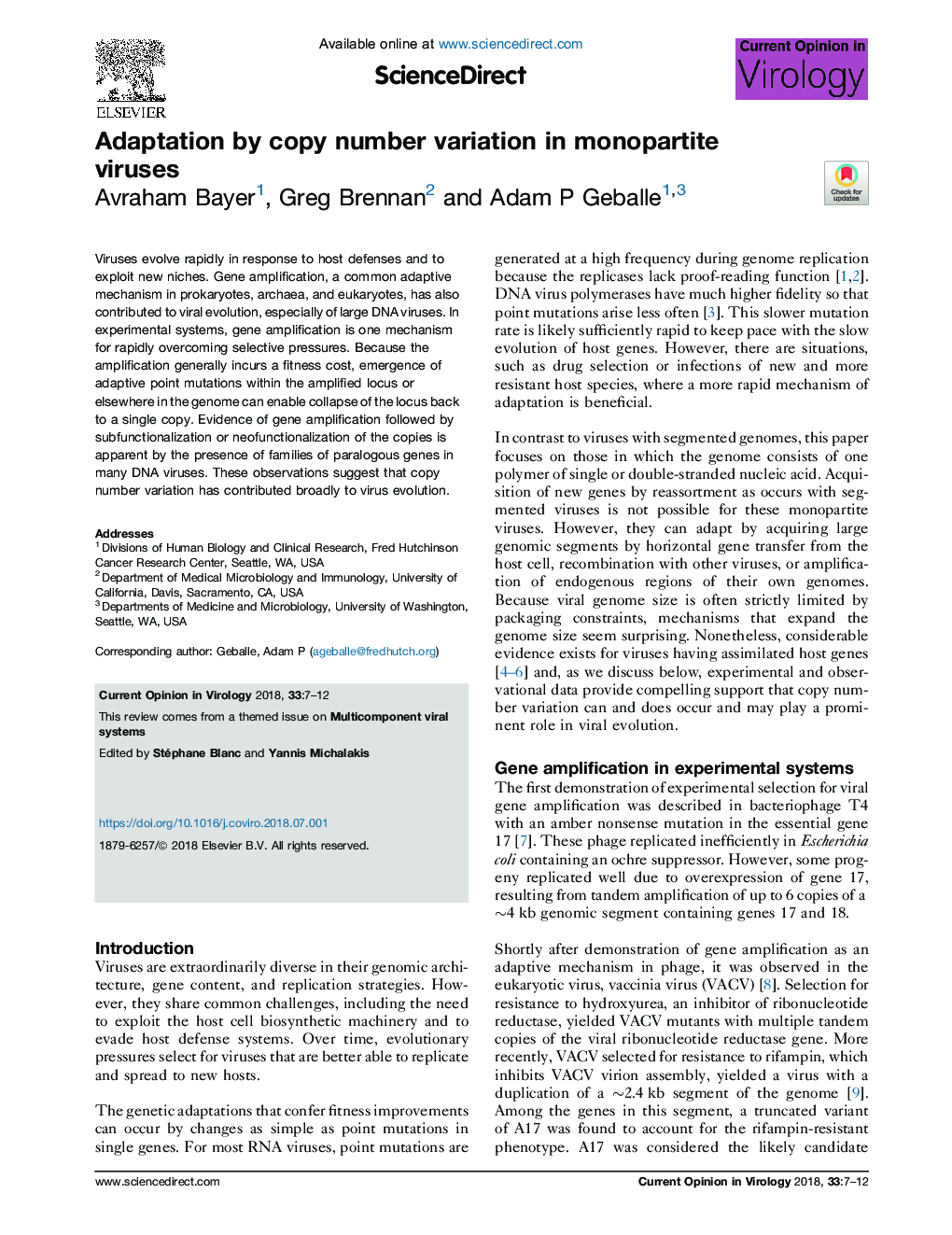| Article ID | Journal | Published Year | Pages | File Type |
|---|---|---|---|---|
| 8506449 | Current Opinion in Virology | 2018 | 6 Pages |
Abstract
Viruses evolve rapidly in response to host defenses and to exploit new niches. Gene amplification, a common adaptive mechanism in prokaryotes, archaea, and eukaryotes, has also contributed to viral evolution, especially of large DNA viruses. In experimental systems, gene amplification is one mechanism for rapidly overcoming selective pressures. Because the amplification generally incurs a fitness cost, emergence of adaptive point mutations within the amplified locus or elsewhere in the genome can enable collapse of the locus back to a single copy. Evidence of gene amplification followed by subfunctionalization or neofunctionalization of the copies is apparent by the presence of families of paralogous genes in many DNA viruses. These observations suggest that copy number variation has contributed broadly to virus evolution.
Related Topics
Life Sciences
Immunology and Microbiology
Virology
Authors
Avraham Bayer, Greg Brennan, Adam P Geballe,
